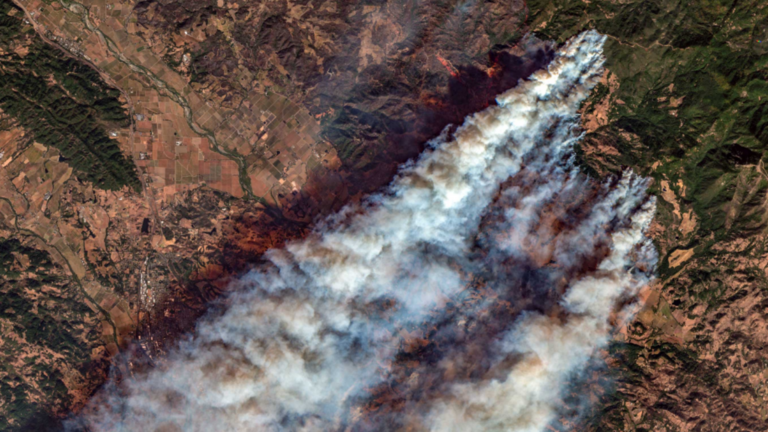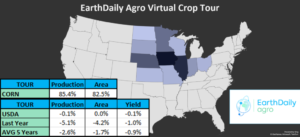The Growing Threat of Climate Change: Impacts on the Insurance Industry

Author: Andre Veneziani

Climate change is fundamentally reshaping the insurance industry. The increasing frequency and severity of natural disasters, coupled with rising sea levels and shifting climate patterns, demand a proactive and data-driven approach to risk management. Traditional models, once reliable, now struggle to keep pace with the dynamic and unpredictable nature of climate-related risks.
Insurers face mounting challenges as extreme weather events become more frequent. Weather-related disasters have increased fivefold over the past 50 years, resulting in $3.64 trillion in global economic losses (World Meteorological Organization, 2021). For insurers, the implications are staggering. In 2022, global insured losses from natural disasters reached $82 billion, with Hurricane Ian alone accounting for $60 billion of that total (Munich Re, 2023).

Hurricane Ian devastated the Gulf Coast in 2022, with estimated insured losses of over $28B. Left: Optical imagery of Fort Meyers, FL. Right: ICEYE flood data indicating flood depths of greater than 2m. Flood data supplied by ICEYE.
The rise in sea levels further complicates risk assessment and underwriting. Since 1880, sea levels have risen by 3.7 inches, and projections indicate an additional rise of up to 12 inches by 2050 (NOAA, 2022). Coastal flooding already causes billions of dollars in damages annually, with flood-related insurance claims reaching $19 billion globally in 2021—double the amount a decade ago (Swiss Re Institute, 2022). This trend underscores the need for advanced risk modeling tools to mitigate the growing financial impact on insurers and policyholders.
Moreover, climate change is altering the geography and patterns of natural disasters. Hurricanes are moving northward, droughts are becoming more prolonged, and wildfires are spreading to regions previously considered safe. Europe, for instance, experienced €5 billion in wildfire-related losses in 2021, a sharp increase for an area traditionally less affected by such events (European Commission Joint Research Centre, 2022). These shifts challenge insurers to recalibrate their models, adapt underwriting practices, and expand coverage to newly vulnerable regions.

The Kincade Fire, which burned over 77,000 acres in November 2019, and caused an estimated $385M in property damage.
The financial implications of these changes are significant. Misjudging risk leads to underpricing, which has already caused substantial losses. In 2022, climate-related disasters accounted for 45% of all global insured losses, exposing the limitations of conventional approaches (Swiss Re Institute, 2022). Reinsurance premiums have also surged, increasing by 20% in 2023 due to the growing frequency and severity of claims (Willis Towers Watson, 2023). This strain underscores the urgent need for innovative solutions.
To address these challenges, insurers are increasingly turning to advanced technologies such as satellite and Earth observation data. These tools enable precise, real-time risk assessments, offering insurers the ability to refine underwriting processes, improve claims management, and enhance customer satisfaction. Satellite imagery, for example, provides unparalleled geospatial precision, allowing insurers to accurately assess building-level risks and reduce analysis timelines from weeks to days.
Parametric insurance, a model that triggers payouts based on specific thresholds like rainfall or wind speed, is also gaining traction. This approach streamlines claims processes, eliminates disputes, and provides faster relief to policyholders. It is particularly beneficial for climate-sensitive industries such as agriculture, where rapid recovery is critical.
Collaboration plays a crucial role in advancing these solutions. Partnerships between insurers, governments, technology firms, and NGOs are enabling faster disaster response and better risk mitigation. For instance, Munich Re’s collaboration with NASA integrates satellite data into catastrophe modeling, offering more accurate predictions and enabling quicker claims resolutions (Munich Re, 2023). These alliances demonstrate the transformative potential of combining industry expertise with cutting-edge technology.
At EarthDaily Analytics, the Ascend platform exemplifies how technology can empower insurers to navigate climate-related challenges. Designed specifically for natural catastrophe management, Ascend provides seamless access to high-quality Earth observation data, advanced geocoding for precise risk modeling, and rapid post-event analytics to support timely decision-making.

Image above depicts flooding from Hurricane Ian north of Sarasota, FL in September 2022. Property flood depth was recorded as 1.89m. Flood data supplied by ICEYE.
In one case study, an insurer leveraged Ascend during a Category 4 hurricane to improve reserving accuracy by over 75%, avoiding a $1.5 billion under-reserving scenario. The platform’s capabilities enabled faster, more accurate claims processing, ensuring financial stability for the insurer and timely support for affected policyholders.
As climate risks continue to evolve, the insurance industry must embrace data-driven strategies and technological innovations to remain resilient. By leveraging tools like satellite imagery and geospatial analytics, insurers can transform risk management practices, reduce financial uncertainty, and support communities in building a sustainable future.
To learn more please contact sales.
References
World Meteorological Organization. (2021, August 31). Weather, climate-related disasters surge fivefold over 50 years. Retrieved from https://public.wmo.int
Munich Re. (2023, January 10). NatCatSERVICE – Loss events worldwide 2022. Retrieved from https://www.munichre.com
National Oceanic and Atmospheric Administration. (2022). Global and Regional Sea Level Rise Scenarios for the United States. Retrieved from https://oceanservice.noaa.gov
Swiss Re Institute. (2022). Natural catastrophes in 2021: Reinsurance resilience tested by high severity and frequency. Retrieved from https://www.swissre.com
European Commission Joint Research Centre. (2022). Forest Fires in Europe, Middle East, and North Africa 2021. Retrieved from https://knowledge4policy.ec.europa.eu
Willis Towers Watson. (2023). Global Reinsurance Market Trends 2023. Retrieved from https://www.wtwco.com


